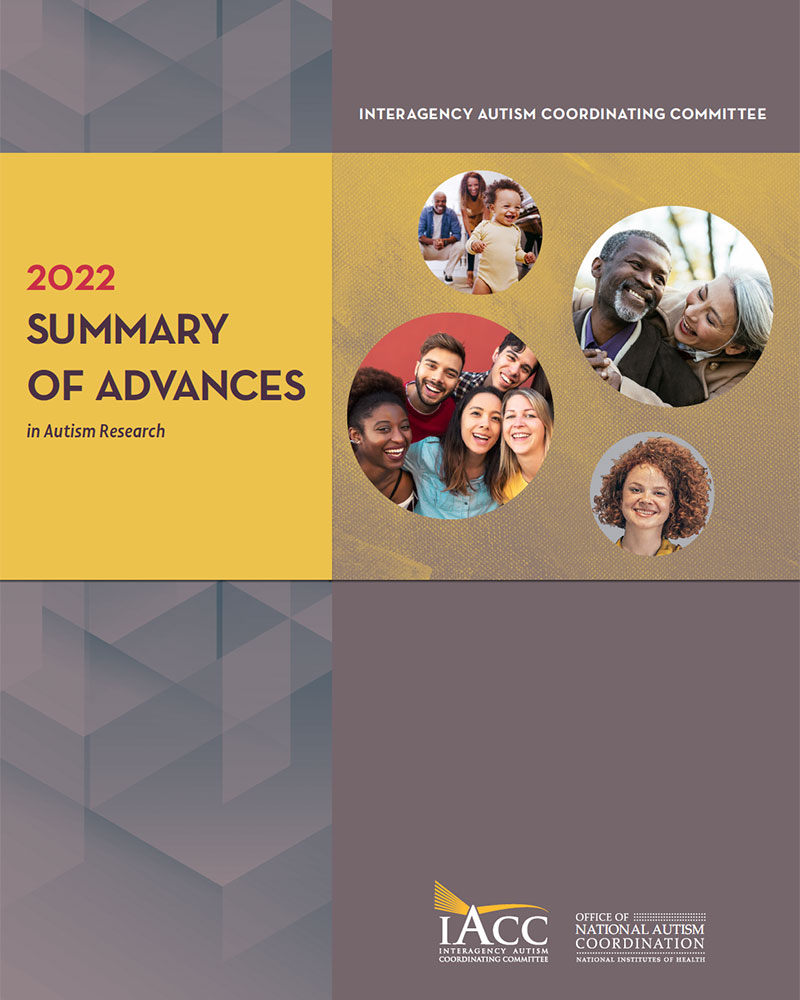Summary of Advances
In Autism Research
2022
Progress and Disparities in Early Identification of Autism Spectrum Disorder: Autism and Developmental Disabilities Monitoring Network, 2002-2016.
Shaw KA, McArthur D, Hughes MM, Bakian AV, Lee LC, Pettygrove S, Maenner MJ. J Am Acad Child Adolesc Psychiatry. 2022 Jul;61(7):905-914. [PMID: 34838692]
At-a-Glance
The number of autistic children identified early increased substantially between 2002 and 2016 in the United States, though racial and ethnic disparities remained; analyses suggest median age should not be used to measure progress.
Background: Many autistic children experience social and communication challenges, and early interventions may improve outcomes for these children. To ensure that all autistic children receive the supports they may need, researchers have sought to understand the reasons for delays and disparities in autism identification. Importantly, the statistical measures used in such research can lead to different interpretations of progress and disparities in early autism detection. This study compared different measures to assess progress in early autism identification over time and by geographic region, race/ethnicity, and presence of co-occurring intellectual disability.
Methods & Findings: Researchers analyzed data collected between 2002 and 2016 for 31,393 8-year-old autistic children in the Autism and Developmental Disabilities Monitoring (ADDM) Network. ADDM Network clinicians reviewed health and education records to determine if a child should be considered to have ASD for the purposes of determining prevalence. Children with a documented ASD diagnosis or special education eligibility were considered “identified” as having autism; “unidentified” autistic children included those whose health and/or education records met criteria for autism but did not have a formal autism diagnosis. Researchers compared median age at identification and cumulative incidence of identified ASD. The median age of autism identification is the age at which 50% of children received an ASD diagnosis or special education eligibility. The cumulative incidence of identified autism is calculated by dividing the number of children identified at or before a given age by the total population, including unidentified children. From 2002 to 2016, the cumulative incidence of children identified with ASD by age 48 months quadrupled. Although children of every race and ethnicity were more likely to be identified over time, Black and Hispanic autistic children without co-occurring intellectual disability were 30% less likely to be identified than were White autistic children without a co-occurring intellectual disability. By contrast, in 2016, Black children with a co-occurring intellectual disability were 50% more likely to be identified with autism than White children with a co-occurring intellectual disability. Both the progress in early identification as well as these striking disparities were masked by the most commonly used measure of early identification, median age of autism identification.
Implications: Significant progress has been made in identifying autism in early childhood, but disparities in early identification by race/ethnicity and co-occurring intellectual disability remain. In particular, race/ethnicity appears to affect the likelihood that children without co-occurring intellectual disability will receive timely diagnoses. Thus, additional research examining these disparities is needed to equitably improve early identification of autism. These findings were not seen using median age of identification, suggesting median age is not useful for measuring public health priorities of progress and disparities in early identification of ASD.




